As an ecologist, I think a lot about the complexity of the natural world. Even so, I am often amazed by the adaptations that animals and plants have developed.
Across a lifetime of photographing and studying the prairie, one of my favorite adaptation examples is the camouflaged looper, an inchworm that disguises itself by gluing bits of flower to its back.
You read that right. The looper creates its own camouflage outfit.
I remember well my first encounter. I was trying to photograph some native bees when I noticed a small movement out of the corner of my eye. A small inchworm was making its way up a purple prairie clover plant. At first, I was impressed by how much the purple spikes on its back looked like prairie clover flowers.
As I looked closer, something struck me as odd.
I reached out and tugged very gently on one of the spikes. Sure enough, it popped right off. The inchworm’s spikes didn’t just look like prairie clover flowers, they were prairie clover flowers!
I photographed the inchworm and eventually learned that I’d found the larva of Synchlora aerata, otherwise known as the camouflaged looper or wavy-lined emerald.
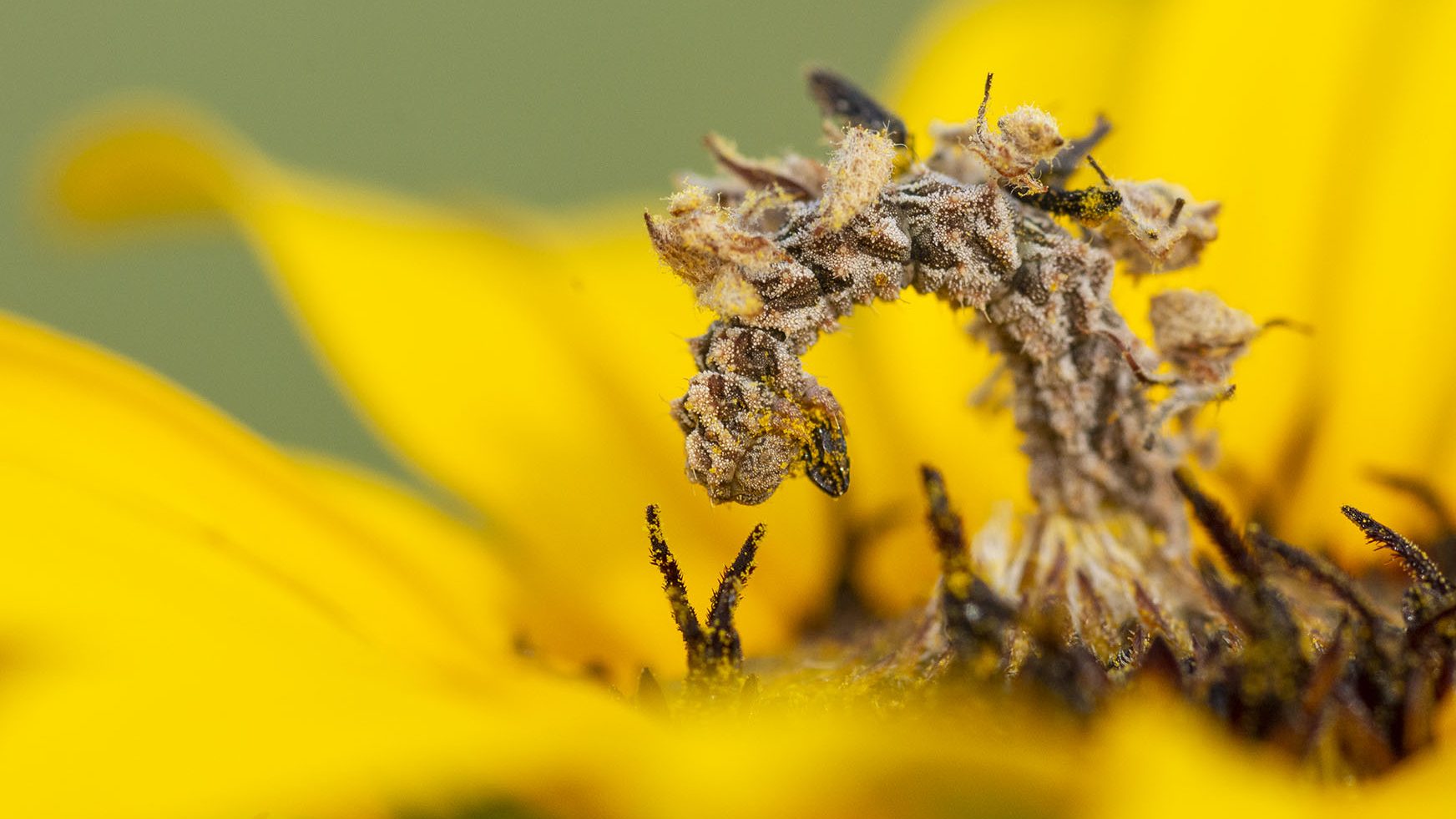
Master of Camouflage
The inchworm and green moth it eventually turns into is one of more than 35,000 species of Geometrid moths found around the world. While most inchworms are well camouflaged, this one takes extreme measures to hide itself from predators.
As I had noticed, the camouflaged looper is named for its incredible ability to disguise itself by
attaching pieces of plant to its back.
More specifically, the inchworm bites off pieces of the particular flower it is feeding on and uses gelatinous “spit” from its mouth to glue the flower pieces to spines on its back.
The “spit” also helps stiffen the flower parts and keep them looking fresh. When parts fall off or start to look dried out, they are replaced.
When the inchworm begins feeding on a different kind of flower, it discards the previous disguise and replaces it with pieces of the new flower.
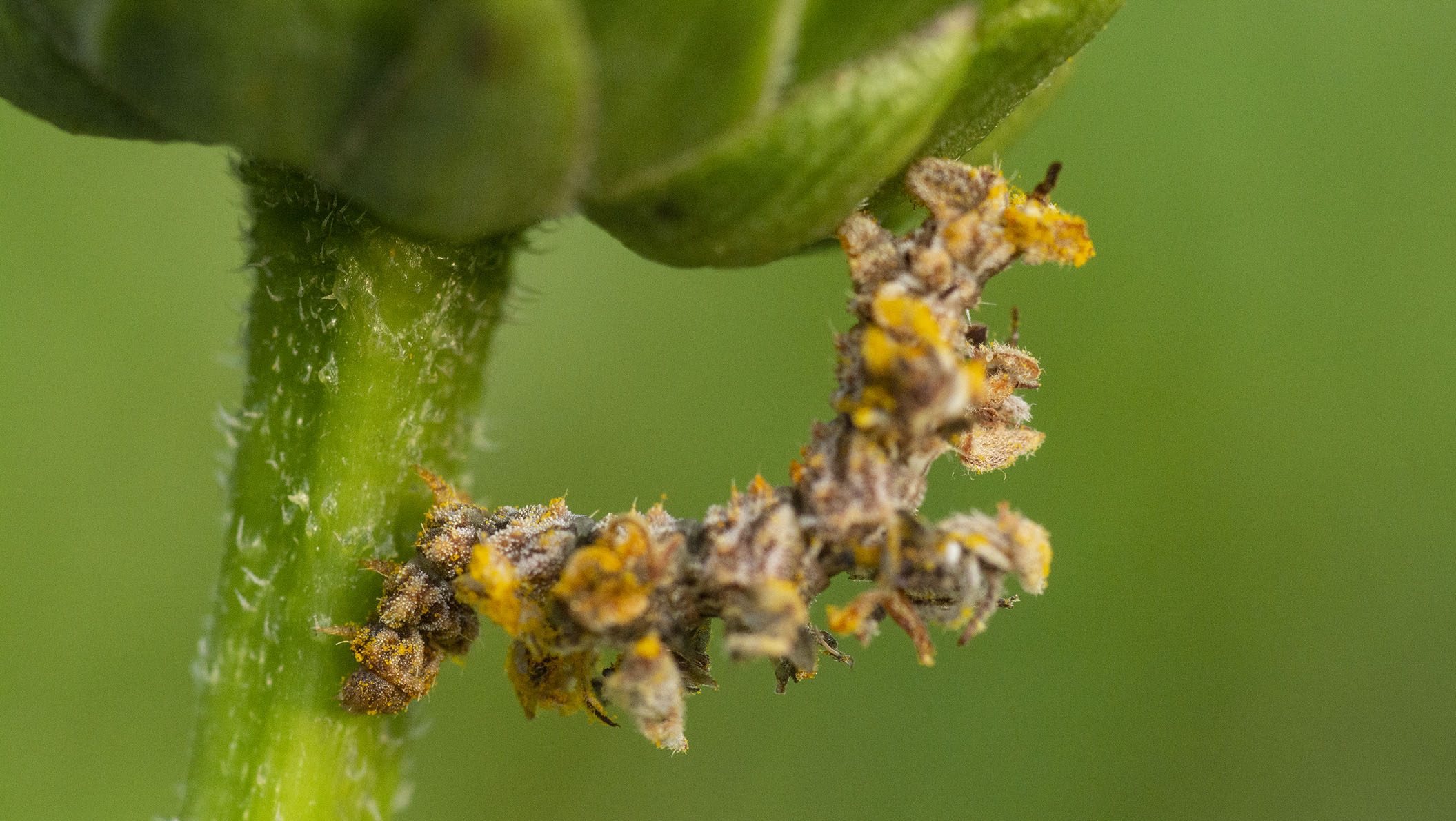
Looper Experiment
Dr. Miklos Treiber of the University of North Carolina described the process in a paper published in 1979 by The Journal of the Lepidopterists’ Society. Treiber would periodically remove some or all of the flower parts from a captive inchworm’s back to see how quickly they would be replaced.
He also moved the inchworms from one type of flower to another to watch them change their disguise. Dr. Treiber reported that while the inchworms were rebuilding their costume, they kept eating.
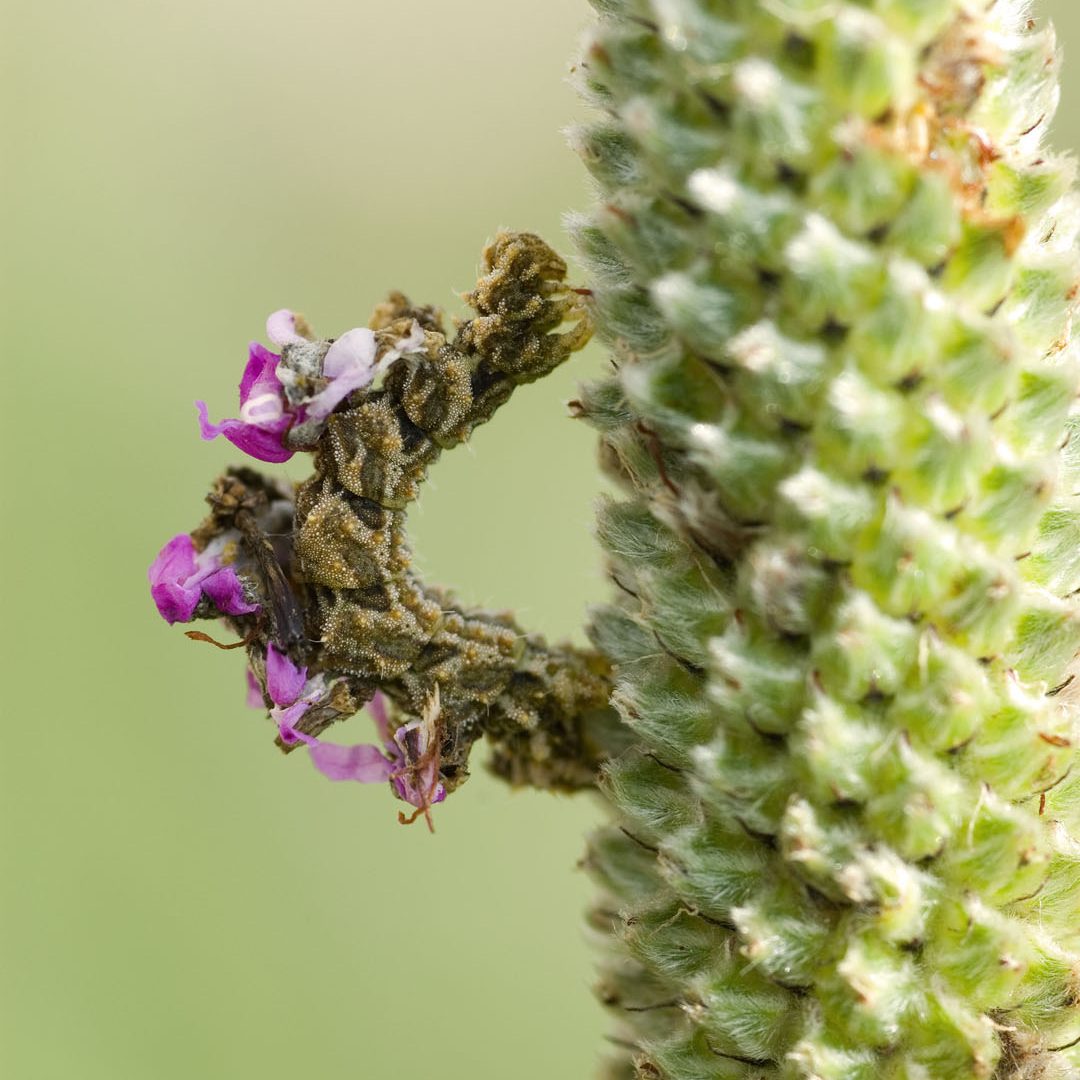
They would alternate between bites of food and bites of costume. On some flowers, the inchworms used different parts of the flower for its disguise than they used for food.
The defense mechanism of the camouflaged looper and other caterpillars is an adaptation probably most useful for hiding from hungry birds.
Most caterpillars have some level of camouflage, including some that look like bark, twigs, thorns, and even bird droppings, but very few can alter their appearance over time.
Scientists figure the camouflaged looper’s ability to change disguises allows it to have a much
more varied diet than other caterpillars because it isn’t restricted to eating only those flowers or plant parts that it resembles in appearance.
The decorator crab and the green lacewing may be the only other invertebrates that attach pieces of their environment to themselves for camouflage – though some others, like caddisfly larvae, construct protective cases that incorporate pebbles and stream detritus.
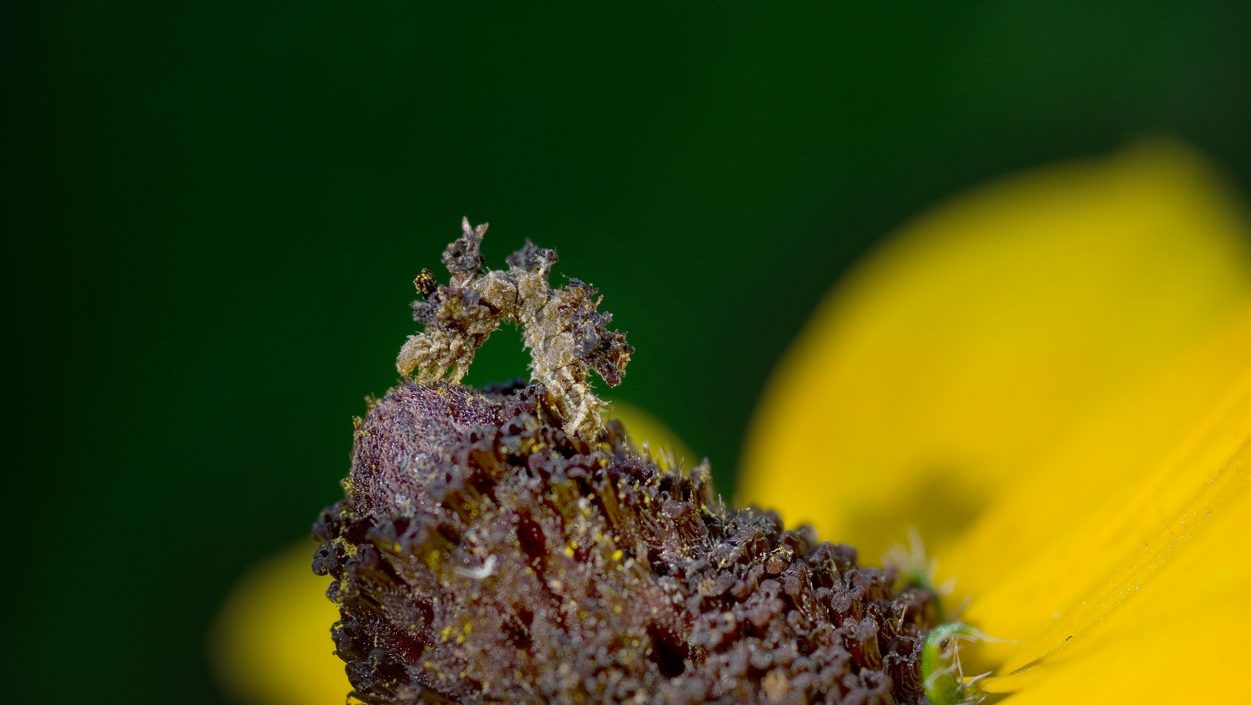
The Office Looper
It was another looper encounter that further endeared this insect to me. I was driving slowly along a two-track trail road at the Niobrara Valley Preserve, scanning for interesting insects as I drove. I’d just spent a couple hours on my belly, photographing dung beetles, wasps, robber flies, and other insects in a sand blowout and I was tired and ready to take a break.
However, the light was still nice. I compromised by driving toward headquarters while still staying alert for potential photo opportunities.
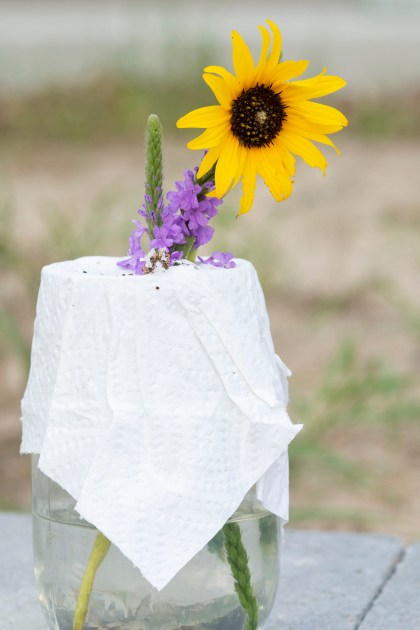
As I drove past one particular sunflower (Helianthus petiolaris), something caught my eye and I stopped and backed the truck up for a second look. Hopping out, I took a few steps over to the flower, bent down to inspect it, and immediately grabbed my camera bag out of the truck. I spent the next 10 minutes or so photographing my favorite insect.
When I was done, I took both the sunflower and the caterpillar with me. I figured I might keep it in the cabin with me for a few days and watch it, maybe photograph it some more, and give some other people a chance to see it too.
I put the sunflower in a glass jar of water and put a clear drinking glass over the to create a makeshift caterpillar apartment. Later, I added a couple hoary vervain flowers in case the caterpillar wanted to change diet/costumes.
I also put a piece of paper towel across the top of the jar to keep the caterpillar from falling into the water. That turned out to be a more significant decision than I’d anticipated.
When I woke up the next morning and checked the caterpillar, it was doing great. It had also changed its costume, though not as I’d expected.
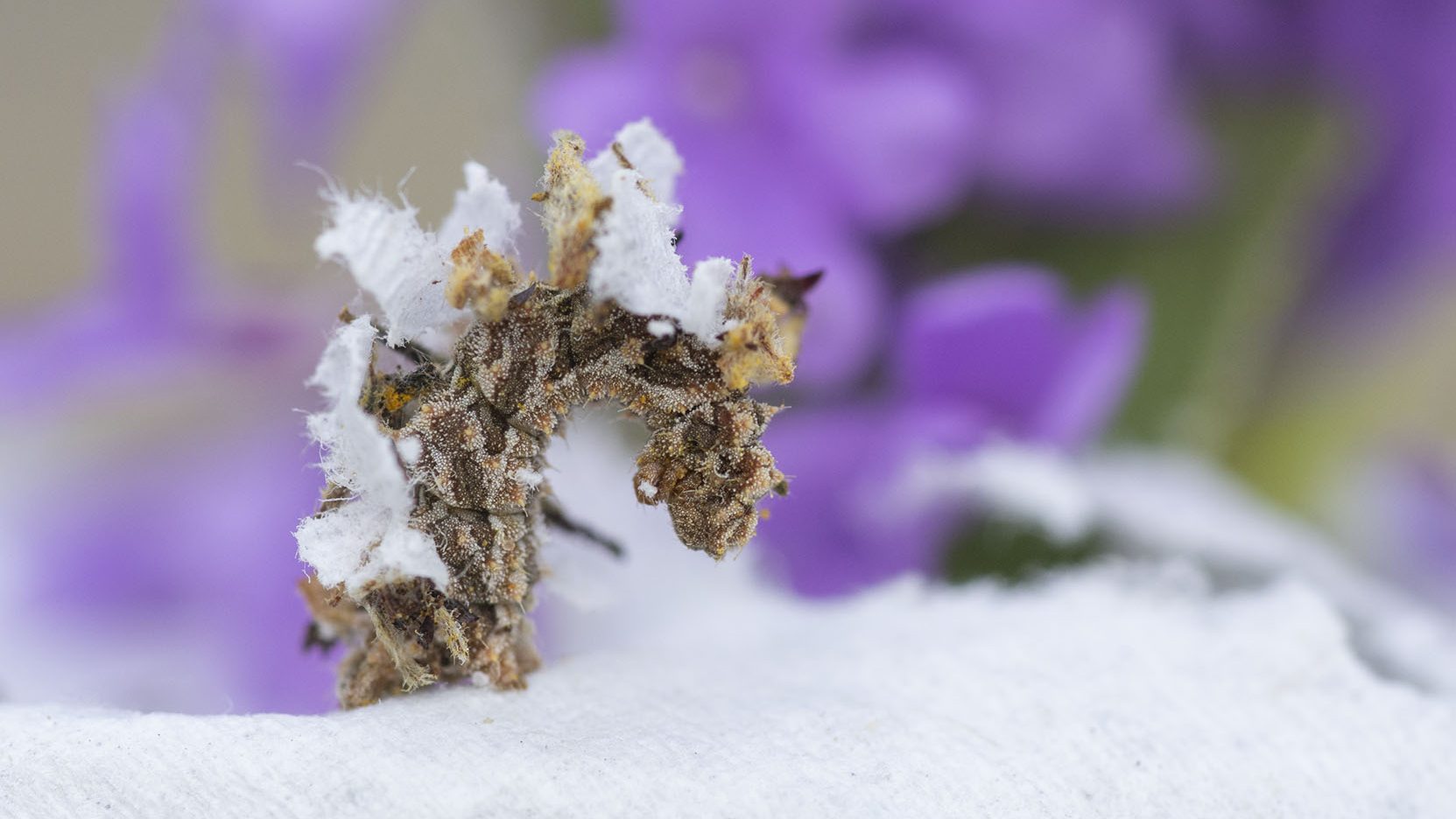
Instead of sunflower anthers or vervain petals, the little bugger had ripped up the paper towel and stuck pieces of paper to its back! It was taking advantage of its surroundings and blending in with what was there. I love it even more now!
Invertebrates make up more than 80 percent of all living animal species on earth. Scientists have discovered and described more than 1.7 million species of insects, but estimate that there are still 8 million species waiting to be discovered. It seems incredible that there are that many species we have not yet found. On the other hand, if they are like the camouflaged looper, they could be hiding right under our noses!
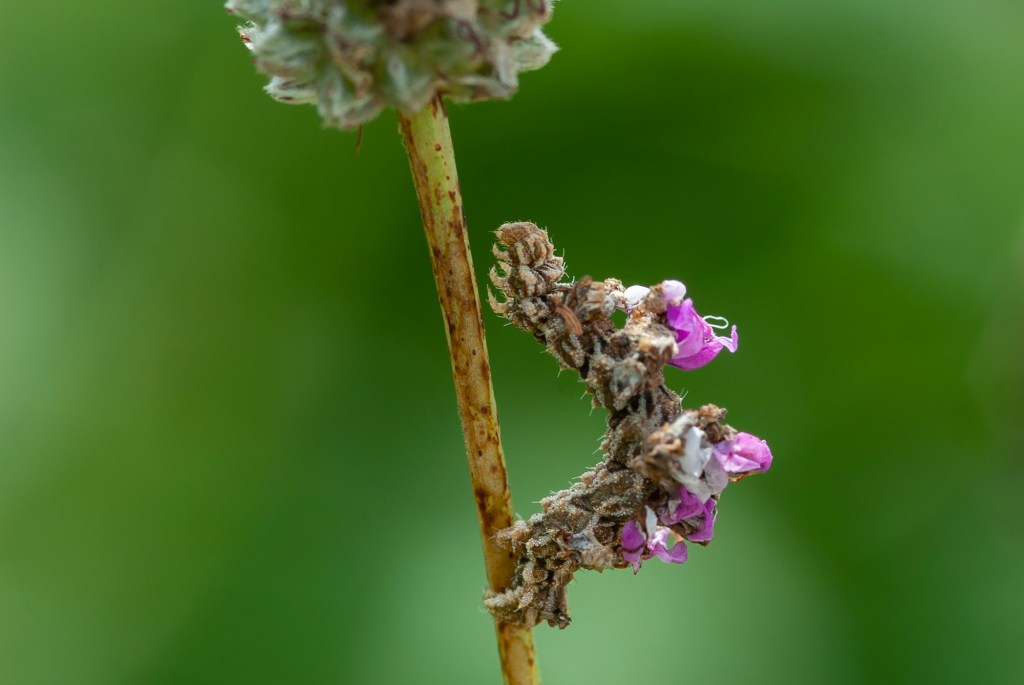



I’d like to know just how the caterpillar manages it. Does it turn around with flower in mouth and reach its own back? Looks like the parts just behind its “neck” area would be inaccessible!
Great story, especially the part about the paper towel. I found and photographed one this morning who was wearing my salvia.
I discovered one in my garden and was so happy to learn about it in this great article! The only thing I’d seen like it was a lacewing larva walking up a tree trunk disguised as lichen. Thank you!
Clearly, it takes time and lots of patience to reap rewards such as the ones described in Chris Helzer’s article. We get to read about them! For me, experiencing these things vicariously is good enough now.
I just found one on my mountain mint and three on asters.
What an fascinating camouflage tactic! I just love that it used the paper towel in its costume.
Fascinating! Great article.